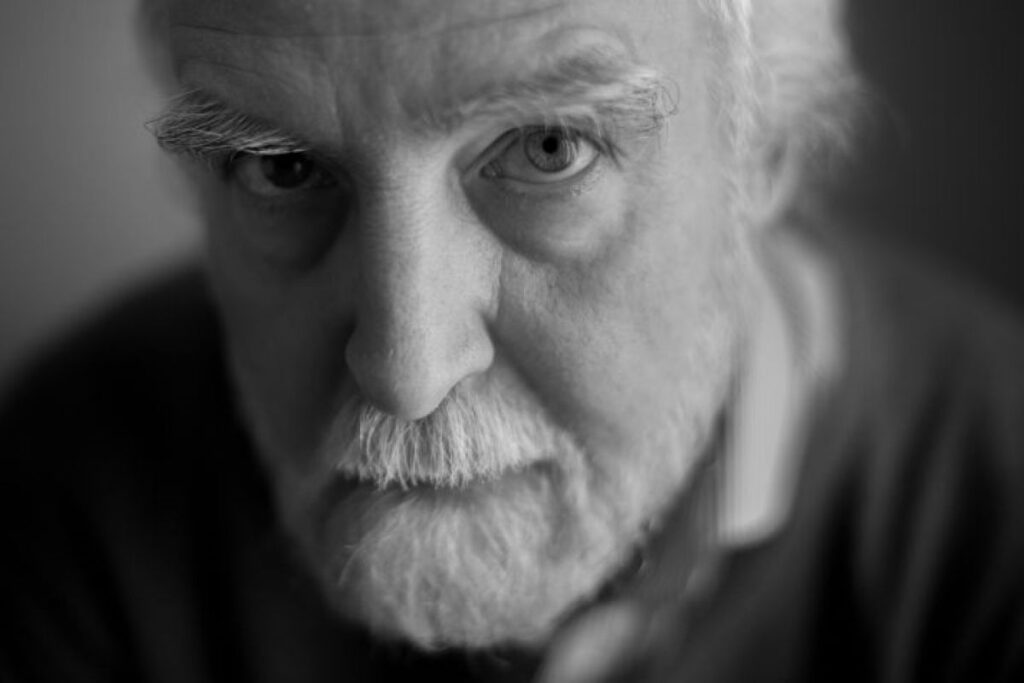The Danish language has a brilliant word for ‘draft’ (in the sense of drafting a piece of work). The noun is ‘udkast’, and translates literally as a ‘throw out’.
I have always understood it more as a throw at – to throw ideas at a blank wall or a canvas. Some will stick, some won’t. What remains will need a fair bit of tidying-up.
This blog exists to extend the discussion of Nordic music and musicians initiated in my book The Northern Silence. I hope it will also prove a useful home for those bits of ‘udkast’ that, for whatever reason, couldn’t be included in the final edition.
One of them, deleted on the grounds of continuity, was a brief look at the music of the Danish composer Lars Graugaard.
Graugaard’s music has fascinated and enchanted me since I got my hands on Engage and Share in 2018, an album he recorded with the Grup Intstrumental de València.
When ‘udkasting’ the chapter Scandinavian by Design, I originally allowed a discussion of the improvisatory qualities inherent in some of Sibelius’s music to lead to a brief word on Engage and Share. A slightly tidied-up version of it is pasted below, together with some thoughts on the album that originally appeared (in Danish) in the magazine Klassisk.
Graugaard’s music is full of thrills. There is plenty of it to explore on the composer’s own website here.

Cause and Effect: Lars Graugaard
Even if they didn’t want to replicate Sibelius’s sound or aesthetic, plenty of composers after him clocked the structural implications of his reactive, quasi-improvisatory designs. Some borrowed his techniques. Others attempted to achieve the same ends using the opposite means – writing music that feels less organic, more induced.
Lars Graugaard, born in Denmark, has produced a series of works employing almost mechanistic principles of cause and effect. What emerges is lucid and impactful music that remains true to functionalist principles in keeping its form clear and treating instruments as essential parts moving in sympathy with one another. Inevitability remains, but in a less gravitational, more forced form.
Slonk (2017) is an onomatopoeic title for a piece whose spasms and waves push it forwards like a musical caterpillar, hugging the ground at predominantly low pitches. Despite the mass of proximate, grinding sound, all is clear. This is nature music from the street – adventures not on mountaintops but in backalleys. It has the consistent feel of an improvisation, even if you know it can’t be.
Slonk‘s form is always clear and the instrumentation fresh and uncluttered despite the forest of sounds – the intense drilling of individual instruments and the low brass that offer up moaning roars like faltering girders.
Blind Lemon (2013) is more theatrical, as the villains of low woodwinds conspire against their innocent siblings higher up, the former burning themselves out before the piece ends in cleansing lightness. A little cosmic tune on the celeste appears to form the turning point, coming after the naturalistic chattering rhythms that are half John Adams half Richard Wagner.
Engage and Share (2014) tells of Graugaard’s musical ideals in deeds as well as in the words of its title: lyrical fragments in clarinets drag the music upwards from its clanging depths towards a tundra consisting of beautiful but barely audible etching. A sense of adventure is built in from the start, with the help of those exceptional dark colours.
Listening to all three works is akin to observing the insides of a fantastic contraption or machine, in which every moving part serves a purpose and operates in sympathy with the others. Part of that comes from Graugaard’s background as an improvising musician – the guys who don’t play a note unless it’s as a reaction to a note someone else has just played or is still playing.
There is a consistent sense of direction – of forward motion – in Graugaard’s scores and in these three, the journeys are as clear as they are rational (in the case of at least two pieces, up from the depths towards the light via a process of construction from low notes to high ones). At both ends of the spectrum, Graugaard’s exploration of tone colour is special.
Accordingly, Graugaard’s music sounds like it is being written as it is being played. Rhythm and motion combine with that remarkable sense of colour to form highly functional and very Nordic sound journeys in which mostly inaudible rhythmic underlays tease the music along (again, see Sibelius). On top of that, expressive melodies emerge, often on two instruments operating as a team and tied by a specific interval. Colourful lyric threads ascend and descend over long distances. Just bit players in an enchanting musical display which is all Graugaard’s own.